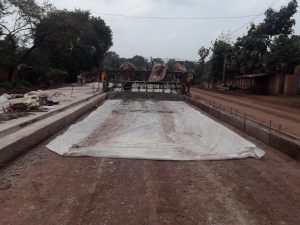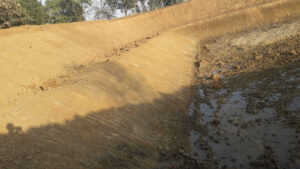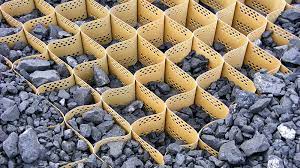Role of Geosynthetics in Civil Engineering & Construction
Geosynthetics are natural or polymeric materials that are utilized in conjunction with soil, rock, or other building components. Geosynthetics have completely transformed civil engineering, particularly geotechnical engineering. Geosynthetics provides innovative ways to handle difficult challenges in a cost-effective and timely manner.
Geosynthetics allows for the utilization of indigenous materials, resulting in long-term solutions. Many manufacturing companies all over the world create Geosynthetics and other related products for use in civil engineering and building systems.
Because of its unique benefits, geosynthetics are increasingly being used in civil engineering. Geosynthetics have been shown to be one of the most adaptable and cost-effective materials for ground alteration. Their applications have quickly spread to practically every aspect of civil, geotechnical, environmental, coastal, and hydraulic engineering.
Table of Contents
Geosynthetics in Roadways

Geosynthetics is a polymeric-based planar product that is utilized in conjunction with soil, rock, earth, or other geotechnical engineering-related materials as part of a man-made project, structure, or system. These goods or materials can be used for a wide range of applications, including all surfaces in the transportation industry, such as roadways, airports, trains, and rivers, sometimes in combination with natural materials.
Filtration, drainage, separation, strengthening, fluid barrier providing, and environmental protection are the primary tasks of geosynthetics. Some geosynthetics are used to segregate two elements, such as soil types so that both stay entirely intact.
Geomembranes are impermeable polymeric sheets that are utilized as liquid and solid waste containment barriers. Geogrids are rigid or flexible polymer grid-like sheets with wide gaps that are typically used to strengthen unstable soil and waste piles. Geonets are rigid polymer net-like sheets having in-plane openings that are principally utilized as a landfill drainage medium.
Geosynthetic clay liners are bentonite clay layers that are integrated between geotextiles and/or geomembranes and utilized as a liquid and solid waste containment barrier. Geo pipes are perforated or solid-walled polymeric pipes that are used to drain a variety of liquids. Geocomposites are hybrid systems that combine any or all of the following geosynthetic kinds and can be used to solve problems in soil, rock, waste, and liquids. Geofoams are lightweight blocks that can be used to fill voids in certain construction projects.
The geosynthetic products most commonly used in roadway systems include geotextiles (woven and non-woven) and geogrids (biaxial and multiaxial), although erosion-control products, geocells, geonets (or geocomposite drainage products), and geomembranes have also been incorporated in several applications. These diverse geosynthetics can be utilized in a range of roadway applications to perform one or more specified functions.
Geosynthetics in Landfills
A composite geomembrane/GCL barrier layer is included in the landfill’s cover system. A geocomposite sheet drain (composite geotextile/geonet) is the drainage layer that sits on top of the geomembrane. In addition, behind the infiltration barrier system, the soil cover system contains geogrid, geotextile, or geocell reinforcements. This layer of reinforcements could be utilized to reduce the strains that differential refuse settlements or future landfill vertical expansion could cause in the barrier layers.
In addition, to offer stability to the vegetative cover soil, the cover system could contain a geogrid or geotextile reinforcement above the infiltration barrier. The fiber reinforcement can also be employed to stabilize the vegetative cover soil’s steep section.
Landfill geosynthetics offer technical and financial advantages over typical clay liners. If incorrectly built and/or constructed, it may cause stability concerns and potentially lead to landfill failure due to its low interface or internal shear strength. Transitional failure involving waste and bottom liner (deep-seated failure) or merely final cover system failure is the most common failure mechanism in geosynthetic-lined landfills (shallow failure). The shear strengths of geosynthetic-geosynthetic and geosynthetic-soil materials vary greatly.
Geosynthetics in the Drainage system
In civil and environmental operations, geosynthetics can be utilized as drains and filters in addition to or instead of typical granular materials. In cases when granular materials available do not fulfill design standards, are rare, or have their usage prohibited by environmental legislation, geosynthetics are easier to deploy in the field and generally cost-effective. In various civil engineering projects, conventional graded granular materials are employed for filtration and drainage. Aggregate drains come in a variety of shapes and sizes. The French drain, which consists of a trench filled with free-draining aggregates, is the most prevalent type of aggregate-filled drain.
It’s very expensive to meet the drainage criterion for a traditional graded filter design. A geosynthetic drainage system can be used to create the conditions quickly and inexpensively. It has the ability to drain as well as the filter. Water can flow freely along the plane of geosynthetic. Transmissivity. Filtration: Geosynthetic allows water to travel through its plane while keeping soil particles in place.
Final Thoughts
Because of its unique benefits, geosynthetics are increasingly being used in civil engineering. Geosynthetics have been shown to be one of the most adaptable and cost-effective materials for ground alteration. Their applications have quickly spread to practically every aspect of civil, geotechnical, environmental, coastal, and hydraulic engineering.



